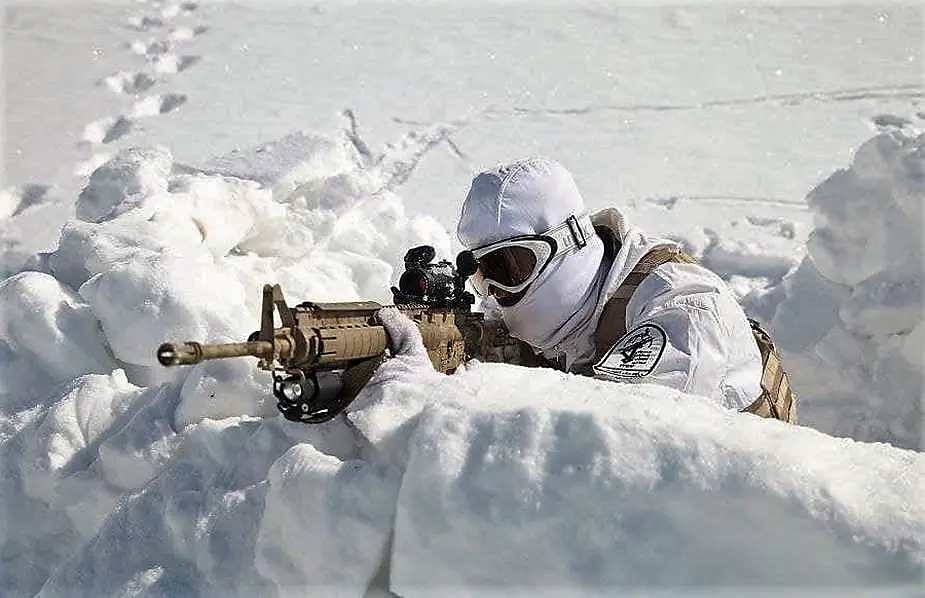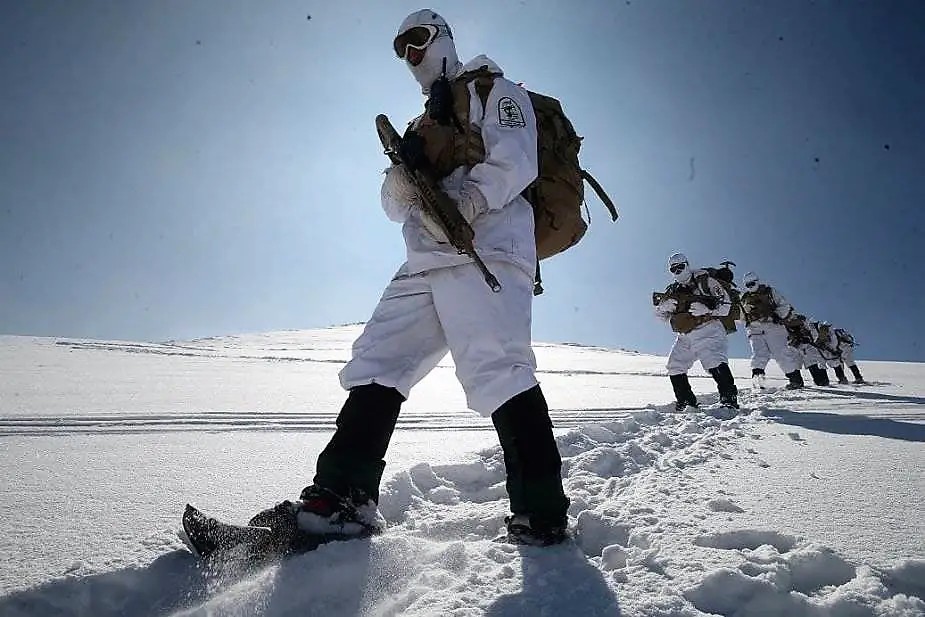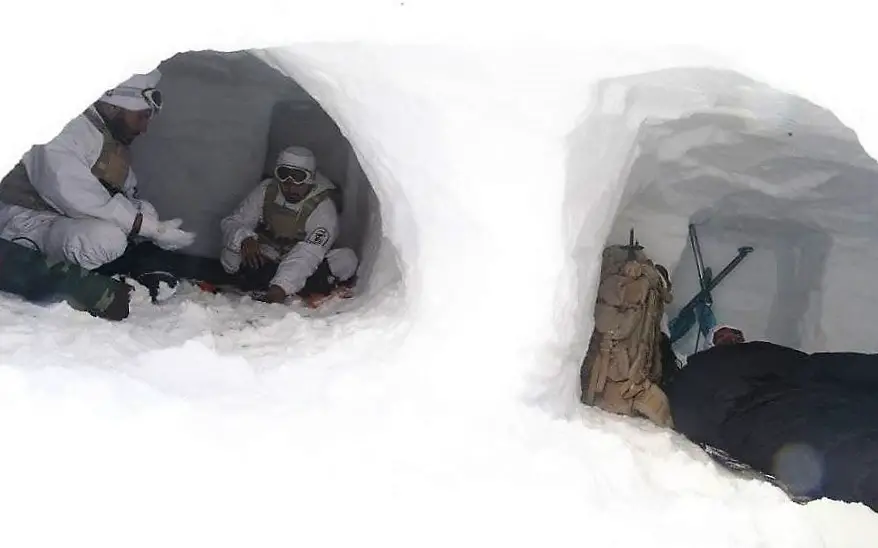Breaking news
IRGC Islamic Revolutionary Guard Corps special forces train in snow.
Iran Drones has tweeted pictures showing winter training of the IRGC (Islamic Revolutionary Guard Corps) ground forces special units, including Mirza Kuchak Khan Brigade, Imam Hassan Mojtaba (AS) Special Brigade and Saberin Special Strategic Unit.
Follow Army Recognition on Google News at this link

IRGC's quads are armed with a light machine gun on bracket (Picture source: IRGC, tweeted by Iran Drones)
The Islamic Revolutionary Guard Corps (IRGC, Army of Guardians of the Islamic Revolution, or Sepâh for short) is a branch of the Iranian Armed Forces, founded after the Iranian Revolution on 22 April 1979 by order of Ayatollah Ruhollah Khomeini. Whereas the Iranian Army defends Iranian borders and maintains internal order, according to the Iranian constitution, the Revolutionary Guard is intended to protect the country's Islamic republic political system. The Revolutionary Guards base their role in protecting the Islamic system as well as preventing foreign interference and coups by the military or "deviant movements".
Since its origin as an ideologically driven militia, the Army of the Guardians of the Islamic Revolution has taken a greater role in nearly every aspect of Iranian society. Reuters opined in 2019 that "It is also an industrial empire with political clout." Its expanded social, political, military and economic role under President Mahmoud Ahmadinejad's administration — especially during the 2009 presidential election and post-election suppression of protest — has led many Western analysts to argue that its political power has surpassed even that of the country's Shia clerical system.
The force's main role is in national security. It is responsible for internal and border security, law enforcement, and also Iran's missile forces. IRGC operations are geared towards asymmetric warfare and less traditional duties. These include the control of smuggling, control of the Strait of Hormuz, and resistance operations. The IRGC is intended to complement the more traditional role of the regular Iranian military, with the two forces operating separately and focusing on different operational roles.
The IRGC is a combined arms force with its own ground forces, navy, air force, intelligence, and special forces. It also controls the Basij militia. The Basij is a volunteer-based force, with 90,000 regular soldiers and 300,000 reservists. The IRGC is officially recognized as a component of the Iranian military under Article 150 of the Iranian Constitution. It is separate from, and parallel to, the other arm of Iran's military, which is called Artesh (another Persian word for an army). Especially in the waters of the Persian Gulf, the IRGC is expected to assume control of any Iranian response to attacks on its nuclear facilities.
The 2020 edition of The Military Balance, published by IISS, wrote the IRGC has about 190,000 active personnel and controls the Basij on mobilization (as many as 40,000 active paramilitary forces). It estimated the Ground Force is 150,000 strong and the Aerospace Force, which controls Iran's strategic missile force, has some 15,000 personnel The Naval Forces are estimated to size at least 20,000, including 5,000 Marines.

IRGC winter training (Picture source: IRGC, tweeted by Iran Drones)

IRGC winter training (Picture source: IRGC, tweeted by Iran Drones)

IRGC winter training (Picture source: IRGC, tweeted by Iran Drones)

























